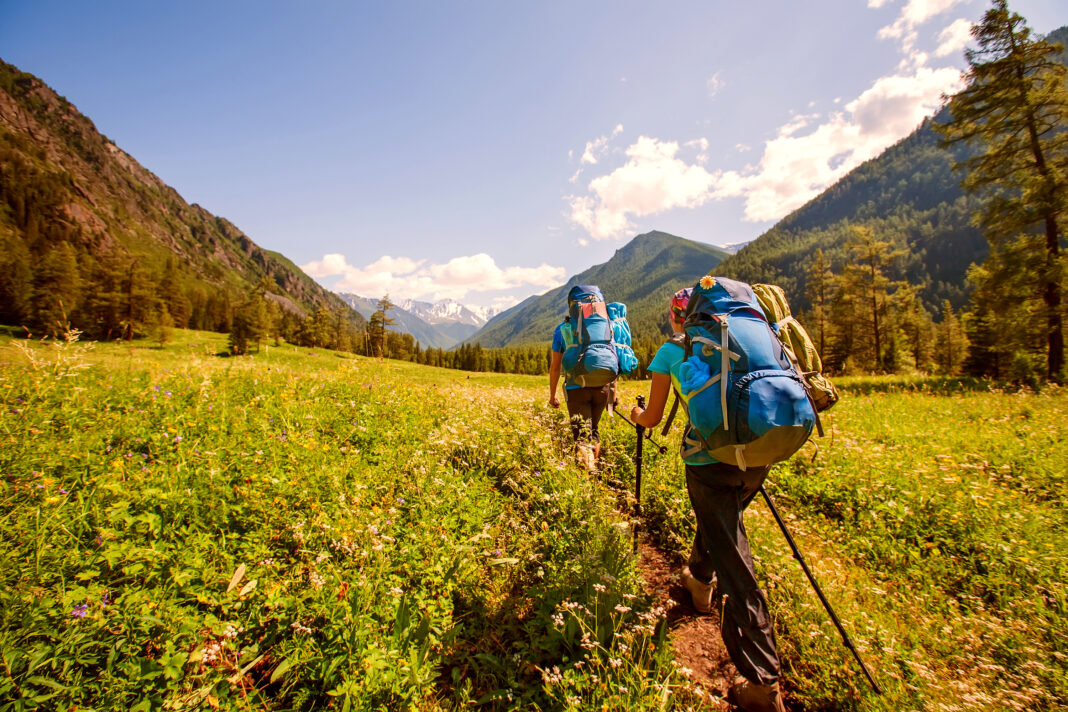Hiking is one of the most popular summer activities in Canada, offering multiple physical and mental health benefits. But despite the benefits of hiking, it is not without its risks: 50 per cent of all fatal and non-fatal hiking accidents are due to falls.
Whether at home or in the wilderness, a fall is commonly due to the inability to regain one’s balance fast enough to avoid hitting the floor or ground. Unfortunately, falls that occur on hiking trails not only impact the injured hiker, but also the remainder of the hiking party as they provide emergency medical care and/or transport the injured hiker to safety. In many cases, emergency services are unable to arrive in time to save the hiker.
50 per cent of all fatal and non-fatal hiking accidents are due to falls.
As experienced hikers know well, ignoring the power and unpredictability of Mother Nature can turn the easiest hike into a disaster. The good news is falls are preventable. The key to fall prevention is the ability to anticipate situations where a hiker may not be able to regain his or her balance fast enough to avoid impact with a boulder or a tree. Here, we’ll explore fall and injury prevention strategies for hikers.
Fuel
Prepare for the inevitable hunger, thirst, and potential fatigue that may arise during your hike. Pack high-calorie snacks to maintain energy levels and carry an ample supply of fluids to stay hydrated throughout the journey. Take regular breaks to rest and sit down, allowing yourself to recuperate and relieve strain on your feet.
Medical Care
Pack a comprehensive mountaineering first-aid kit containing bandages, wound dressings, adhesive tape, antiseptic wipes, blister treatment, pain relievers, and any necessary personal medications. Additionally, include a reliable satellite phone or emergency communication device to ensure you can call for help if needed, even in areas with no cell coverage.
Terrain
Be prepared for the possibility of slipping on wet rocks or tripping over tree roots while hiking. Wear sturdy hiking shoes or boots with good traction to minimize the risk of falls. Always keep your focus on the trail ahead, ensuring you have a clear view of each step. Keep both hands free to grab onto support if necessary, whether it’s a rock, tree, or walking stick. Utilize a walking stick for added stability and assistance when navigating uneven terrain or steep inclines.
Pain
Prepare for potential knee pain and leg weakness, particularly during downhill sections of your hike. If you have a history of knee issues or instability, opt for trails with minimal elevation changes to reduce strain. It’s essential to wait until any existing pain has subsided before heading out on another hike to prevent furthering your condition. Fellow Hikers Recognize that every hiker is unique. It’s important not to
shame or criticize any hiker who may be slower, have a history of falls, or experience knee, hip, or balance issues. Instead, demonstrate compassion and support by walking alongside them and choosing a trail that is shorter with minimal elevation changes. This approach fosters inclusivity and ensures everyone can enjoy the hiking experience safely and comfortably.
Time
Anticipate the possibility of losing daylight earlier than expected, which could lead to difficulties navigating in the dark or getting lost. Avoid lingering too long at the summit of your hike; allow yourself sufficient time to return to your starting point before sunset. Ensure you carry a headlamp in your pack along with spare batteries if your hike extends into the evening hours.
Pace
Beware running down a hiking trail. When running downhill we land each stride in a plantar flexed position, which is the most unstable position, and increases the risk of spraining your ankle and falling. If you trip on a root or rock, the likelihood is that you won’t be able to protect your head in time and could suffer a serious head injury.
Weather Changes
It’s essential to anticipate sudden temperature fluctuations that can result in heat stroke or hypothermia, potentially affecting a hiker’s ability to continue. Pack multiple layers of lightweight clothing to adjust to changing conditions, along with sun protection like hats and sunscreen, and carry an ample supply of non-alcoholic fluids to stay hydrated. Additionally, be vigilant about sudden and severe weather changes that may lead to slippery trails. Keep a constant watch on the horizon for signs of changing weather patterns and be ready to safely conclude the hike and return to your starting point before conditions worsen, ensuring everyone’s safety.
Post-Hike
It’s common to experience heightened leg or joint discomfort for up to 72 hours following a hike. During this period, take caution when navigating stairs at home and use handrails for added support if necessary. If your pain persists or intensifies beyond this timeframe, consider seeking guidance from a physiotherapist or consulting your family physician for a thorough assessment and appropriate recommendations.
This proactive approach can help address any lingering issues and support your recovery effectively.
You may also like: The Best Training Exercises for Hiking Season

Read This Story in Our 2024 Summer Outdoor & Travel Issue
Featuring Canadian Taekwondo Olympian, Skylar Park. Must-visit adventure destinations across Canada. Your best trail running season ever with FAQs and threshold training plans. How (and why) gravel biking can rule your summer. Essential preparation to stay injury-free during hikes. Zero-waste your hiking and camping trips like a pro. Treat yourself with a Rustic Strawberry Chocolate Tart or Dairy-Free Vanilla Ice Cream, and so much more.

















